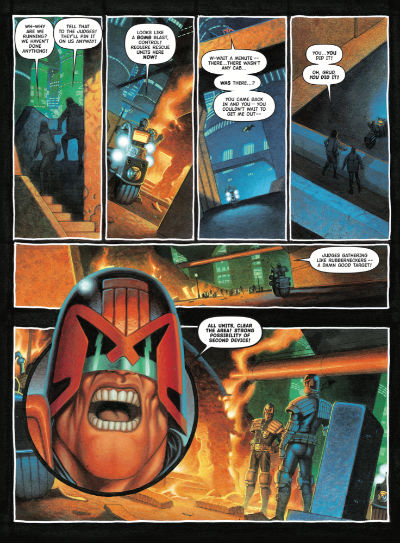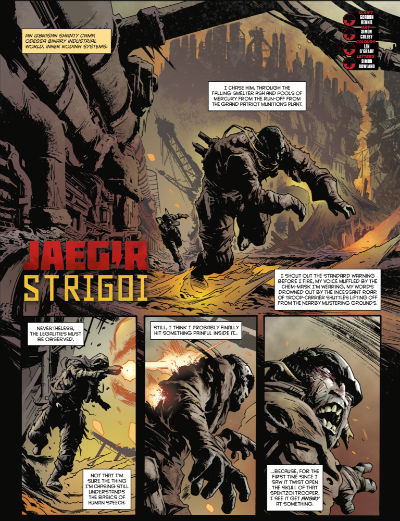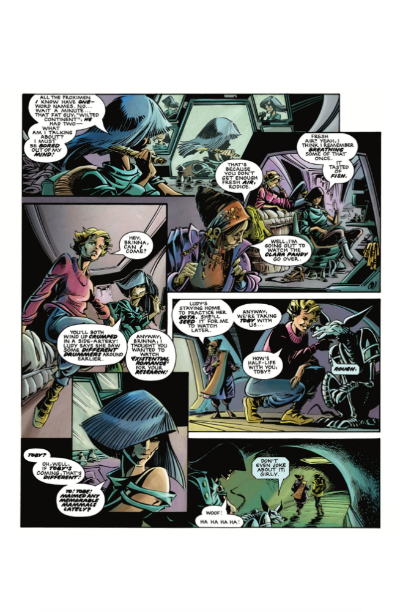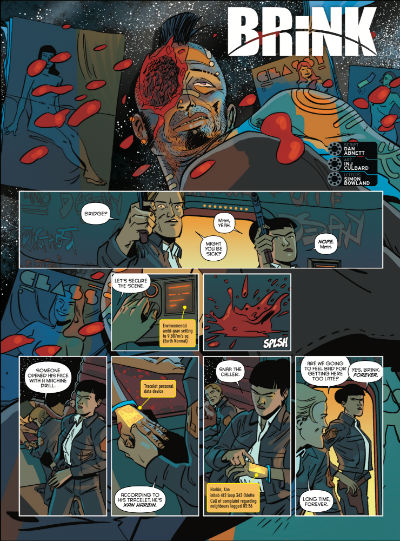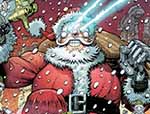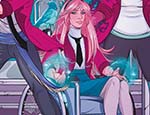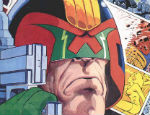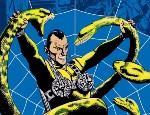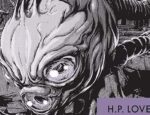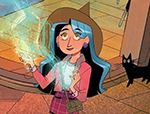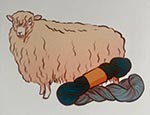The very title Best of 2000 AD was by (subjective) definition always going to be a divisive one. Rebellion’s new 12-issue series debuts this April, retaining the anthology format of its parent publication with a remit to bring its universe of characters to new audiences and provide an accessible intro for those wanting to investigate this institution of British comics further.
With a focus on the “modern era” of 2000 AD it allows an emphasis on material that arguably is less dated in presentational style. What’s important in assessing the effectiveness of this first issue is avoiding discussions about what has or hasn’t been included but on concentrating on the success of this collection of strips in bringing these characters and their worlds to uninitiated readerships. In that regard it largely succeeds admirably in its aims with a carefully curated selection of stories and strips that showcase both the thematic heart and the decades of genre reinvention that have made the Galaxy’s Greatest Comic a UK pop cultural national treasure.
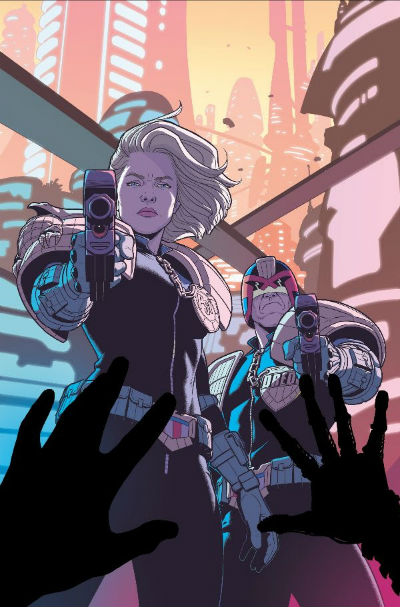
Best of 2000 AD #1 cover by Jamie McKelvie
Unsurprisingly it’s Judge Dredd that takes up more than half of the issue with a complete story ‘Terror’ (below) by the legendary John Wagner and Colin MacNeil. It’s a most appropriate starting point for those unfamiliar with Dredd’s environment. The future lawman and his post-apocalyptic world of radioactive wastelands, fascistic justice system and densely packed Mega-Cities is 2000 AD’s most memorable creation and, while this story of two lovers caught up in pro-democracy terrorism is shorn of the glorious excesses of black humour and overt satire that are so often a part of a classic Judge Dredd strip, it’s a perfect introduction to the political foundation of Mega City-One, the comic’s uncompromising social commentary, and the terrifying ironies that sit at the heart of Dredd’s universe. MacNeil’s visuals ramp up the claustrophobic tension, neatly contrasting the dynamically violent with quieter moments of character-led debate.
Backing up that complete-in-one tale are three other serialised stories. Spinning out of future war strip Rogue Trooper is Gordon Ronnie and Simon Coleby’s Jaegir (below), providing a different perspective on the enemy Norts of that series but without relinquishing its grim and brutal worldview. What’s vital here is that no prior knowledge of the history of the wider storyline is needed to enjoy this tense socio-political thriller as the titular character investigates the war criminals among her own side. Coleby is an artist who has always deserved far greater recognition and, fittingly, there’s something positively nihilistic about the environment he creates for the cast in these pages.
Backing up the first two features are Dan Abnett and INJ Culbard’s atmospheric crime procedural Brink, taking place in a universe where humanity has been evacuated to space station environments, and an all-time classic from before the Rebellion era of 2000 AD – Alan Moore and Ian Gibson’s The Ballad of Halo Jones (below). The immediate thing that strikes the reader about the former is that a month between bite-sized instalments may be too much to keep this carefully paced narrative flowing and that perhaps three main strips in each issue would give both Jaegir and Brink more time to resonate with readers. The logistics of rotation may, of course, have come into play here.
Halo Jones is not simply a classic of 2000 AD or even of British comics; it’s one of Moore’s greatest concepts and for all its critical acclaim still deserves far greater recognition for its brilliant social observation in this first book (of three). Set on a 50th century circular housing estate known as the Hoop what marks this strip out is not so much the world-building as the society-building of Halo’s world, with its own customs, language and social structures, all so memorably brought to life by Gibson. A simple shopping trip in this intensely overwhelming locale is the unlikely initial premise for a series that will forever open up questions of what could have been had it reached its planned multi-book conclusion.
There are whispers of the original serialised method of delivery in places in Best of 2000 AD #1, as attempts to present some of the work without its episodic breaks results in occasional awkward transitions, especially with exposition-led recaps. But ultimately that’s a small consideration. No doubt there will be those who point to the lack of more ostentatious examples of 2000 AD’s legendary dark humour in this collection (a Henry Flint/Annie Parkhouse Tharg’s Alien Invasions one-pager is a brief nod in that direction) but, ultimately, this isn’t a competition about whose favourites should or shouldn’t have made it through the selection process. Rather, it’s about providing an introductory package that is both accessible and also a fitting embodiment of the worlds of 2000 AD.
In that regard it’s an excellent entry point for trepidatious new readers who may have felt that decades worth of thrill-powered content were simply too daunting a prospect to navigate, and the perfect cheaply priced starting place for those wanting to then take those explorations further.
And even if you have read all of its interiors before, that Jamie McKelvie cover is worth the cover price alone…
John Wagner, Colin MacNeil, Alan Moore, Ian Gibson, Gordon Rennie, Simon Coleby, Dan Abnett, INJ Culbard, Henry Flint, Annie Parkhouse, Tom Frame, Len O’Grady, Simon Bowland, Steve Potter, Tom Muller • Rebellion, $4.99
Advance review – ships April 2020. Order code: JAN201942
Review by Andy Oliver





